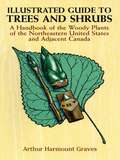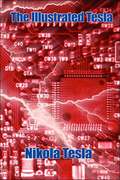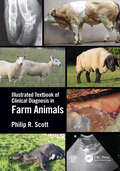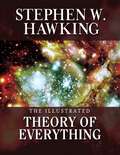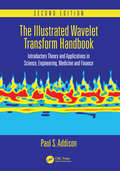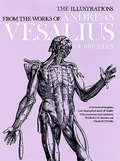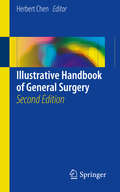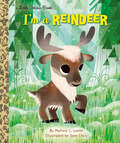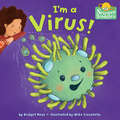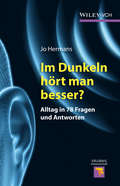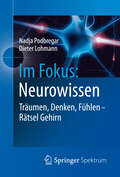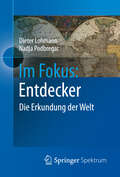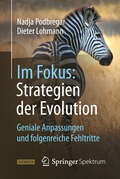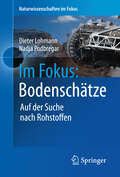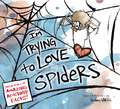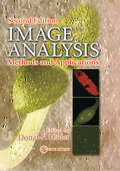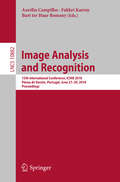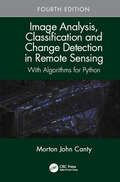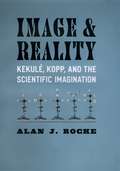- Table View
- List View
An Illustrated Guide to Linear Programming
by Dr Saul I. Gass"I would not hesitate to recommend the book." -- Industrial Engineering. Entertaining, nontechnical introduction covers basic concepts of linear programming and its relationship to operations research; geometric interpretation and problem solving, solution techniques, network problems, much more. Appendix offers precise statements of definitions, theorems, and techniques, additional computational procedures. Only high-school algebra needed. Bibliography.
An Illustrated Guide to Relativity
by Tatsu TakeuchiAimed at both physics students and non-science majors, this unique book explains Einstein's special theory of relativity pictorially, using diagrams rather than equations. The diagrams guide the reader, step-by-step, from the basics of relativity to advanced topics including the addition of velocities, Lorentz contraction, time dilation, the twin paradox, Doppler shift, and Einstein's famous equation E=mc2. The distinctive figures throughout the book enable the reader to visualize the theory in a way that cannot be fully conveyed through equations alone. The illustrative explanations in this book maintain the logic and rigour necessary for physics students, yet are simple enough to be understood by non-scientists. The book also contains entertaining problems which challenge the reader's understanding of the materials covered.
Illustrated Guide to Trees and Shrubs: A Handbook of the Woody Plants of the Northeastern United States and Adjacent Canada/Revised Edition
by Arthur Harmount GravesAuthoritative, easily accessible guide omits lengthy technical descriptions in favor of easy-to-use keys covering such characteristics as leaves, twigs, bark, buds, seeds, stems, fruit or fruit stalks, and other identifying traits. Over 300 pen-and-ink drawings by Maud H. Purdy, noted botanical illustrator. "I recommend this book most highly." -- Farida A. Wiley, American Museum of Natural History.
The Illustrated Tesla
by Nikola TeslaCollected here are twenty of Nikola Tesla's essays, letters, and speeches all with figures. In total there are some 214 figures. Now you can read these famous articles as they were intended to be read. Included are A New System of Alternating Current Motors and Transformers; Experiments with Alternate Currents of Very High Frequency and Their Application to Methods of Artificial Illumination; Experiments with Alternate Currents of High Potential and High Frequency; On Light and Other High Frequency Phenomena; The Problem of Increasing Human Energy, With Special References to the Harnessing of the Sun's Energy; The Disturbing Influence of Solar Radiation on the Wireless Transmission of Energy; Famous Scientific Illusions; Electrical Oscillators; and many many more!
Illustrated Textbook of Clinical Diagnosis in Farm Animals
by Philip R ScottProviding veterinary students with a brand-new approach to large animal medicine, this portable textbook first describes the detailed examination of each organ system achievable on the farm using technologies such as rapid ultrasound examination and radiography, illustrated via unique images and video recordings. Key points, images and video recordings then provide the ranked lists of differential diagnoses for common farm animal clinical presentations requested by veterinary students to aid their examination. The repository of over 1000 30-60 second video clips accompanying the book show the clinical presentation, diagnosis, recovery or pathology of all common disorders, accessible on the farm with a smart phone Packed with imagery, the text distils the essential information in a logical, easily accessible way, aiding diagnosis. Small and spiral-bound, the book offers a lifeline for veterinary students during their EMS (extra-mural studies) placements.
The Illustrated Theory of Everything: The Origin and Fate of the Universe
by Stephen W HawkingBased on a series of lectures given at Cambridge University, The Theory of Everything presents the most complex concepts of physics— both past and present— in a clear and accessible manner. Stephen Hawking enlightens readers and exposes them to the rich history of scientific thought and the complexities of the universe in which we live. Using computer-assisted technology, Hawking reads from his own work.
The Illustrated Wavelet Transform Handbook: Introductory Theory and Applications in Science, Engineering, Medicine and Finance, Second Edition
by Paul S. AddisonThis second edition of The Illustrated Wavelet Transform Handbook: Introductory Theory and Applications in Science, Engineering, Medicine and Finance has been fully updated and revised to reflect recent developments in the theory and practical applications of wavelet transform methods. The book is designed specifically for the applied reader in science, engineering, medicine and finance. Newcomers to the subject will find an accessible and clear account of the theory of continuous and discrete wavelet transforms, while readers already acquainted with wavelets can use the book to broaden their perspective. One of the many strengths of the book is its use of several hundred illustrations, some in colour, to convey key concepts and their varied practical uses. Chapters exploring these practical applications highlight both the similarities and differences in wavelet transform methods across different disciplines and also provide a comprehensive list of over 1000 references that will serve as a valuable resource for further study. Paul Addison is a Technical Fellow with Medtronic, a global medical technology company. Previously, he was co-founder and CEO of start-up company, CardioDigital Ltd (and later co-founded its US subsidiary, CardioDigital Inc) - a company concerned with the development of novel wavelet-based methods for biosignal analysis. He has a master’s degree in engineering and a PhD in fluid mechanics, both from the University of Glasgow, Scotland (founded 1451). His former academic life as a tenured professor of fluids engineering included the output of a large number of technical papers, covering many aspects of engineering and bioengineering, and two textbooks: Fractals and Chaos: An Illustrated Course and the first edition of The Illustrated Wavelet Transform Handbook. At the time of publication, the author has over 100 issued US patents concerning a wide range of medical device technologies, many of these concerning the wavelet transform analysis of biosignals. He is both a Chartered Engineer and Chartered Physicist.
The Illustrations from the Works of Andreas Vesalius of Brussels
by J. B. Saunders Charles O’MalleyThe works of Andreas Vesalius (1514–1564) have long been regarded among the great treasures of the Renaissance. Published as medical books while he was teaching anatomy and dissection at the University of Padua, they include the Tabulae Sex (1538), intended as an aid to students; the magnificently illustrated De Humani Corporis Fabrica (1543), and the companion volume, the Epitome (1543). Individually, these books are milestones in the history of medicine. They also offer one of the most magnificent collections of anatomical drawings ever published. The plates were executed with such vitality and originality that they have been attributed to the most talented illustrators of the sixteenth century, not to mention Vesalius himself. Many of the drawings, in fact, were products of Titian's famous atelier. For this edition of the Vesalius illustrations, Dover has combined the best existing plates and text. The illustrations have been reproduced from the sumptuous (1934) Munich edition of Vesalius titled Icones Anatomicae. The Munich plates were struck for the most part from the original wood blocks then in the collection of the Library of the University of Munich. These priceless art objects were destroyed in the bombing of Munich during World War II. Aside from the original copies of the woodcuts (of which only a few complete sets are known), the Munich restrikes are the best representations of the Vesalian anatomical drawings, for they preserve much of the freshness and richness of the 1543 edition. The text of this Dover edition has been faithfully reproduced from an edition of Vesalius published by World Publishing Company in 1950. The editors, distinguished authorities on sixteenth-century medicine, have provided a very comprehensive history of Vesalius, his career, and excellent explanations of the legends surrounding the illustrators, artists, and publishers involved with the production of his books. No other source will provide the general reader, bibliophile, art historian, artist, or historian of science and medicine with such complete data on Vesalius and his fabulous anatomical illustrations.
Illustrative Handbook of General Surgery
by Herbert ChenWith the large number of surgical atlases in the market focusing on a variety of surgical procedures, it is almost impossible to find an area that is not comprehensively illustrated. However, almost all of these atlases are very large and serve to be 'library reference' books, which are commonly displayed in the office and utilized in that manner. There is no atlas which is easily transportable, yet one would imagine that every medical student and resident would potentially want a copy of such a title to carry on them at all times. The book aims to cover all facets of general surgery and each chapter has five to ten photographs illustrating the basic anatomical context, as well as the various techniques specific to the operation. Each chapter author provides a brief narrative describing what is going on during the operation, and also outlines common pitfalls and personal suggestions.
I'm a Reindeer (Little Golden Book)
by Mallory LoehrFrom the author and illustrator of I'M A UNICORN and I'M A NARWHAL comes a Little Golden Book all about an adorable reindeer!I'm a deer. But not just any deer--I'm a reindeer!Reindeer are strong as soon as they are born. I could run before I was two hours old!Young girls and boys will love this informative introduction to the adorable and fascinating reindeer. Find out where they live, why their fur changes from season to seaon, and lots more. But do reindeer fly? That's for you--and Santa--to decide! A terrific follow-up to the Little Golden Books I'm a Unicorn, I'm a Narwhal, and I'm a Dragon. Makes a great gift for the holidays or any time!
I'm a Virus! (Science Buddies #1)
by Bridget HeosScary science is introduced with humor-laced facts in this new nonfiction picture book series from a prolific, award-winning children&’s book author, starting with our tiniest invader—the common cold virus, and its more frightening relatives!How does a virus make us sick? How does it spread? And what can people do to beat them?Hi, I'm Virus! And I'm here to answer all these questions and more! In friendly, simple text, the most "common" virus, rhinovirus (the common cold), explains how viruses work and spread. With funny, engaging, and informative illustrations, this is the perfect way to explain viruses to young children who have questions in the wake of a pandemic. The nonthreatening common cold walks readers through the basics of viruses, and then features past viruses we have defeated, as well as introducing COVID-19. The start of a new series designed to make scary science more approachable, Science Buddies is here to explain the world to curious young minds!
I'm Calling the Police
by Irvin D. Yalom"Something heavy is going on ... the past is erupting ... my two lives, night and day, are joining. I need to talk." Irv Yalom's old medical school friend was making a plea for help. In their fifty years of friendship, Bob Berger had never divulged his nocturnal terrors to his close comrade. Now, finally, he found himself forced to.In I'm Calling the Police, Berger recounts to Yalom the anguish of a war-torn past: By pretending he was a Christian, Berger survived the Holocaust. But after a life defined by expiation and repression, a dangerous encounter has jarred loose the painful memory of those years. Together, they interpret the fragments of the horrific past that haunt his dreams.I'm Calling the Police is a powerful exploration of Yalom's most vital themes--memory, fear, love, and healing--and a glimpse into the life of the man himself.
Im Dunkeln hört man besser?: Alltag in 78 Fragen und Antworten
by Renate van der Laan Jo HermansWir alle kennen das: Wir konnten (vielleicht) schon mal erklaren, warum es auf der einen Seite des Berges regnet und auf der anderen nicht, wie GPS-Navigation funktioniert, oder warum ein Ei in der Mikrowelle explodiert - aber heute kriegen wir das nicht mehr uberzeugend hin. Wie schade! Und: Wie gut, dass in diesem Buch der bekannte Wissenschaftsvermittler Jo Hermans viele dieser Alltagsphanomene nun so anschaulich erklart, dass wir vergnuglich schmokern konnen und dabei vergessenes Wissen auffrischen und Neues dazulernen. Natur, Licht und Farbe, rundum das Haus... Nein, es braucht wirklich kein Physikstudium, um zu verstehen, warum Eis so glatt ist - oder Fragen zu klaren wie die, ob man wirklich im Dunkeln besser hort oder man seine Wohnung mit dem Kuhlschrank kuhlen kann. Zumal Jo Hermans alles dafur tut, uns die Lekture so abwechslungsreich wie moglich zu gestalten. Sich amusieren und gleichzeitig etwas lernen - das geht also doch! Es werden funf Themenbereiche abgedeckt: freie Natur, Fahrrad und Auto, Licht und Farbe, Rundum das Haus, Gerausch und Horen. Verruckte Flummis, tollkuhne Weinglaser: Experimentieren macht Spa?! Fur Leser, die obendrein auch noch gerne etwas ausprobieren, geizt Hermans nicht mit Vor-schlagen fur Experimente: ob Kaffeebechermusik, Lichtzerlegung mithilfe von CDs, verruckte Flummis oder tollkuhnes Weinglas. Uberraschungen garantiert und inklusive! Und die Besserwisser unter den Lesern finden zusatzliche Informationen in den eingestreuten Boxen.
Im Fokus: Dem Bauplan des Lebens auf der Spur
by Dieter Lohmann Nadja PodbregarWelche Macht haben unsere Gene? Sind sie die schicksalhafte Blaupause, die bestimmt, wie intelligent, wie alt oder wie schön wir sind? Lange Zeit war dies die gängige Lehrmeinung. Doch das Dogma ihrer monolithischen Allmacht ist heute längst gefallen. Immer häufiger stoßen Forscher auf Hinweise, wie unser Leben den Genen "ins Handwerk" pfuscht und wie eng die Wechselwirkungen zwischen Erbgut, Stoffwechsel und Umwelt manchmal sind. Die moderne Biotechnologie eröffnet neue Wege der Forschung, wirft aber auch ethische und gesellschaftliche Fragen auf. Dieses Buch erklärt unter anderem, warum bei den Genen die Verpackung manchmal wichtiger ist als der Inhalt, was Viren in unserem Erbgut verloren haben und weshalb es "das Methusalem-Gen" nicht gibt.
Im Fokus: Neurowissen
by Nadja Podbregar Dieter LohmannKönnen wir im Schlaf lernen? Wie weit reicht der Einfluss der Hormone? Und wodurch wird bestimmt, ob wir hochbegabt sind? Im Zentrum dieser Fragen steht unser Gehirn. In den letzten Jahren sind Neurowissenschaftler immer tiefer in die Struktur und Physiologie des Gehirns vorgedrungen. Sie entdeckten neue, überraschende Zusammenhänge und Wechselwirkungen, die auch unser Bild von uns selbst ständig verändern. Dieses Buch nimmt Leser mit auf eine Erkundungsreise zu faszinierenden und rätselhaften Phänomenen unseres Denkens, Fühlens und Bewusstseins.
Im Fokus: Entdecker
by Nadja Podbregar Dieter LohmannWährend es heute auf der Landkarte unserer Erde kaum noch weißen Flecken gibt, waren im 13. Jahrhundert weite Teile "Terra incognita". Licht ins Dunkel brachten erst die Entdecker und Seefahrer - angetrieben von Forschergeist und vom Streben nach Macht und Reichtum. In dem Buch werden auf ebenso spannende wie amüsante Weise ihre wichtigsten Stationen geschildert: Leser begleiten Marco Polo ins alte China und Magellan, als er zum ersten Mal die Welt umsegelt; Kolumbus bei der (Wieder-)Entdeckung Amerikas und Robert Peary beim Wettlauf zum Nordpol.
Im Fokus: Strategien der Evolution
by Nadja Podbregar Dieter LohmannIst die Evolution immer ein Erfolgsmodell? Bringt sie stets ideal an ihre Umwelt angepasste Organismen hervor? Sind geniale Strategien ihr Kennzeichen? Zumindest bei einigen Lebewesen spricht alles dafür: So überleben manche Mikroben selbst in ätzenden Säuretümpeln und viele Tiere trotzen selbst glühendem Wüstenwind oder arktischen Frösten. Manchmal allerdings scheinen der Evolution auch Pannen unterlaufen zu sein: Weibchen von Spinnen und Schrecken bringen regelmäßig ihre Männchen um, Ameisen entpuppen sich als Sklavenhalter und Wale verlieren immer wieder ihre Orientierung. Doch trotz dieser scheinbaren Fehlentwicklungen haben es auch diese Organismen geschafft zu überleben und sich auf Dauer auf der Erde zu halten - zum Teil seit Millionen von Jahren. Andere dagegen blieben auf der Strecke. Was aber ist das Rezept für Erfolg oder Misserfolg in der Natur? Dieses Buch beleuchtet die Mechanismen der Evolution, die Meister und Versager hervorbringt. Naturwissenschaften im Fokus - Reihenherausgeber: Harald Frater
Im Fokus: Bodenschätze
by Nadja Podbregar Dieter LohmannDer Rohstoffverbrauch der Menschheit steigt. Allein in Deutschland verbraucht jeder im Laufe seines Lebens durchschnittlich rund 1.000 Tonnen Erze, Erden und Mineralien. Auch der Energiebedarf verlangt ständig Nachschub. Doch die Rohstoffreserven sind endlich - entsprechend intensiv ist die Suche nach neuen Lagerstätten oder ganz neuen Ressourcen. Der Autor erklärt in dem Buch u. a., was Handys mit Gorillas zu tun haben, warum Manganknollen zum Rohstoff der Zukunft werden könnten und wo in Deutschland wichtige Bodenschätze und Energiequellen warten.
Im Reich der Träume: Die rätselhafte Welt des Schlafes
by David K. RandallDer New York Times-Bestseller über die erstaunlichen Erkenntnisse der SchlafforschungJede Nacht widmen wir ihm etliche Stunden: Dennoch gibt der Schlaf uns allen – Schläfern wie Wissenschaftlern gleichermaßen – verblüffend viele Rätsel auf. Obwohl wir nahezu ein Drittel unseres Lebens schlafend verbringen, wissen wir nicht wirklich, inwiefern dies bedeutsam für uns ist. Warum müssen wir überhaupt schlafen? Warum bedroht Schlafmangel unsere Gesundheit, warum ist Schlafentzug Folter? Was geschieht mit uns, wenn wir träumen? Lernen wir im Schlaf? Und was hat es mit dem Schlafwandeln auf sich?Kaum etwas beeinflusst unser Leben so sehr wie die Qualität unseres Schlafs. Schlafstörungen scheinen in Zusammenhang mit Diabetes, Bluthochdruck, Schlaganfällen und Demenz zu stehen. Und in unseren sozialen Beziehungen birgt der Schlafplatz eine Menge Zündstoff: Sollten Eltern ihr Bett mit ihrem Säugling teilen? Was tun, wenn der andere schnarcht? Ist eine Ehe zum Scheitern verurteilt, wenn die Partner in getrennten Betten schlafen?Der Wissenschaftsjournalist David Randall gewährt uns vielfältige Einblicke in die Forschungsarbeiten, die jene nächtlichen Stunden zu erhellen versuchen. Auf einer Entdeckungsreise, die von Kriegsschauplätzen bis ins Kinderzimmer führt, offenbart Im Reich der Träume, dass Schlafen nicht im Entferntesten so banal ist, wie es uns erscheinen mag, wenn wir abends das Licht ausmachen.
I'm Trying to Love Spiders
by Bethany BartonThe Official Spider Test.What do you do when you see a spider?a. Lay on a BIG spidey smoocheroo.b. Smile, but back away slowly.c. Grab the closest object, wind up, and let it fly.d. Run away screaming. If you chose b, c, or d, then this book is for you! (If you chose a, you might be crazy.) I’m Trying to Love Spiders will help you see these amazing arachnids in a whole new light, from their awesomely excessive eight eyes, to the seventy-five pounds of bugs a spider can eat in a single year! And you’re sure to feel better knowing you have a better chance of being struck by lightning than being fatally bit by a spider. Comforting, right? No? Either way, there’s heaps more information in here to help you forget your fears . . . or at least laugh a lot!
Image Analysis: Methods and Applications, Second Edition
by Donat-P. HaderAutomatic image analysis has become an important tool in many fields of biology, medicine, and other sciences. Since the first edition of Image Analysis: Methods and Applications, the development of both software and hardware technology has undergone quantum leaps. For example, specific mathematical filters have been developed for quality enhanceme
Image Analysis and Modeling in Ophthalmology
by Jasjit S. Suri U. Rajendra Acharya Aurélio Campilho E. Y. K. NgDigital fundus images can effectively diagnose glaucoma and diabetes retinopathy, while infrared imaging can show changes in the vascular tissues. Likening the eye to the conventional camera, Image Analysis and Modeling in Ophthalmology explores the application of advanced image processing in ocular imaging. This book considers how images can be us
Image Analysis and Recognition: 15th International Conference, ICIAR 2018, Póvoa de Varzim, Portugal, June 27–29, 2018, Proceedings (Lecture Notes in Computer Science #10882)
by Aurélio Campilho Fakhri Karray Bart ter Haar RomenyThis book constitutes the thoroughly refereed proceedings of the 15th International Conference on Image Analysis and Recognition, ICIAR 2018, held in Póvoa de Varzim, Portugal, in June 2018.The 91 full papers presented together with 15 short papers were carefully reviewed and selected from 179 submissions. The papers are organized in the following topical sections: Enhancement, Restoration and Reconstruction, Image Segmentation, Detection, Classication and Recognition, Indexing and Retrieval, Computer Vision, Activity Recognition, Traffic and Surveillance, Applications, Biomedical Image Analysis, Diagnosis and Screening of Ophthalmic Diseases, and Challenge on Breast Cancer Histology Images.
Image Analysis, Classification and Change Detection in Remote Sensing: With Algorithms for Python, Fourth Edition
by Morton John CantyImage Analysis, Classification and Change Detection in Remote Sensing: With Algorithms for Python, Fourth Edition, is focused on the development and implementation of statistically motivated, data-driven techniques for digital image analysis of remotely sensed imagery and it features a tight interweaving of statistical and machine learning theory of algorithms with computer codes. It develops statistical methods for the analysis of optical/infrared and synthetic aperture radar (SAR) imagery, including wavelet transformations, kernel methods for nonlinear classification, as well as an introduction to deep learning in the context of feed forward neural networks. New in the Fourth Edition: An in-depth treatment of a recent sequential change detection algorithm for polarimetric SAR image time series. The accompanying software consists of Python (open source) versions of all of the main image analysis algorithms. Presents easy, platform-independent software installation methods (Docker containerization). Utilizes freely accessible imagery via the Google Earth Engine and provides many examples of cloud programming (Google Earth Engine API). Examines deep learning examples including TensorFlow and a sound introduction to neural networks, Based on the success and the reputation of the previous editions and compared to other textbooks in the market, Professor Canty’s fourth edition differs in the depth and sophistication of the material treated as well as in its consistent use of computer codes to illustrate the methods and algorithms discussed. It is self-contained and illustrated with many programming examples, all of which can be conveniently run in a web browser. Each chapter concludes with exercises complementing or extending the material in the text.
Image and Reality: Kekule, Kopp, and the Scientific Imagination
by Alan J. RockeNineteenth-century chemists were faced with a particular problem: how to depict the atoms and molecules that are beyond the direct reach of our bodily senses. In visualizing this microworld, these scientists were the first to move beyond high-level philosophical speculations regarding the unseen. In Image and Reality, Alan Rocke focuses on the community of organic chemists in Germany to provide the basis for a fuller understanding of the nature of scientific creativity. Arguing that visual mental images regularly assisted many of these scientists in thinking through old problems and new possibilities, Rocke uses a variety of sources, including private correspondence, diagrams and illustrations, scientific papers, and public statements, to investigate their ability to not only imagine the invisibly tiny atoms and molecules upon which they operated daily, but to build detailed and empirically based pictures of how all of the atoms in complicated molecules were interconnected. These portrayals of “chemical structures,” both as mental images and as paper tools, gradually became an accepted part of science during these years and are now regarded as one of the central defining features of chemistry. In telling this fascinating story in a manner accessible to the lay reader, Rocke also suggests that imagistic thinking is often at the heart of creative thinking in all fields. Image and Reality is the first book in the Synthesis series, a series in the history of chemistry, broadly construed, edited by Angela N. H. Creager, John E. Lesch, Stuart W. Leslie, Lawrence M. Principe, Alan Rocke, E. C. Spary, and Audra J. Wolfe, in partnership with the Chemical Heritage Foundation.


